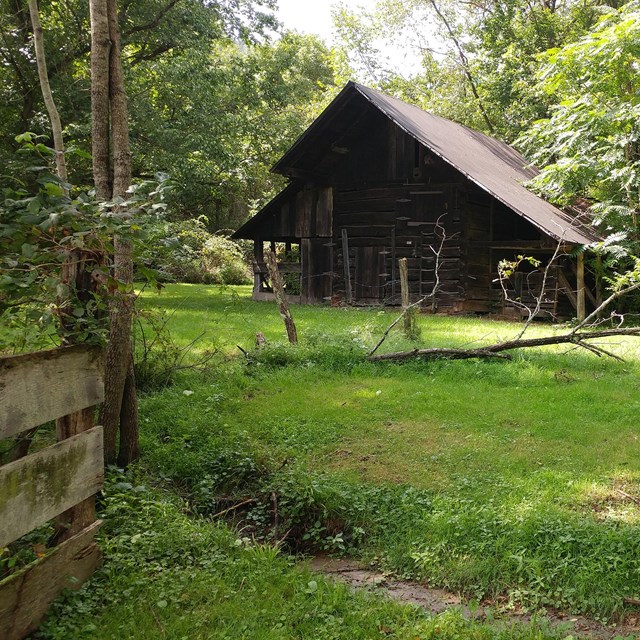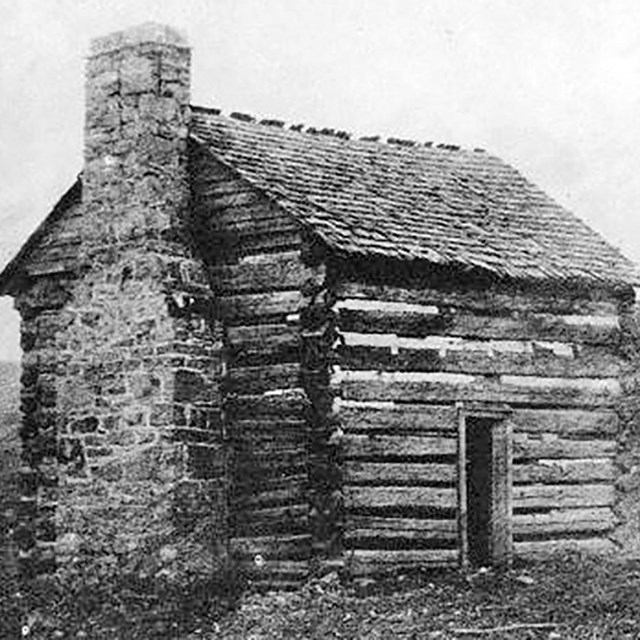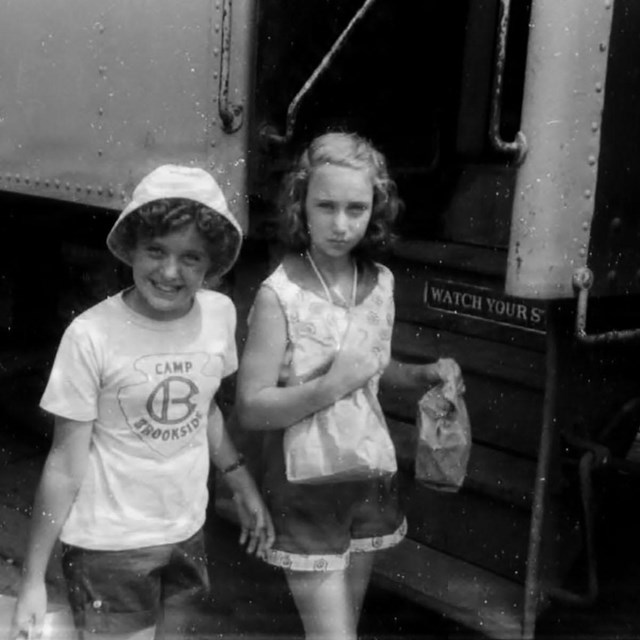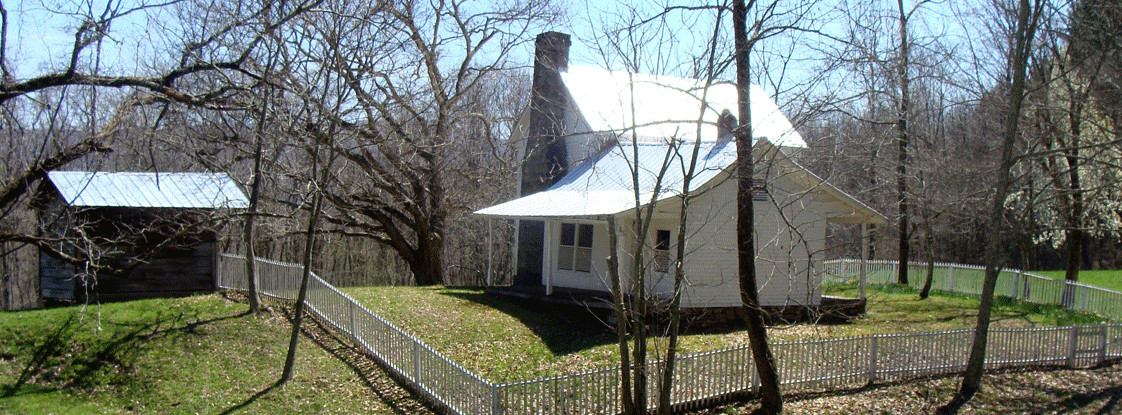
NPS / Dave Bieri
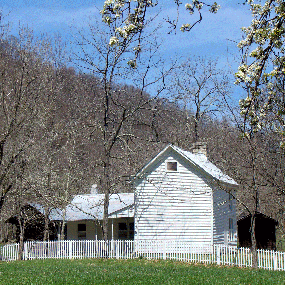
NPS / Dave Bieri Many people have never experienced the harsh realities of subsistence farming. When the land is harsh and rugged, traditional farming is difficult or impossible. Those that lived on subsistence farming carved out a hard life from rough land. West Virginia SettlementEarly European settlers that came to America often settled on good land near the coasts. Flat or forested land was easier to farm. Only rugged explorers and a few brave settlers travelled to West Virginia. The mountainous terrain was difficult to cross and not suitable for building settlements. After the creation of the United States, its new citizens began moving west. Throughout Westward Expansion, these immigrants and pioneers passed by West Virginia. Its rugged mountains could not compete with the flat crop fields in modern day states like Ohio and Iowa. The few people who chose to settle in West Virginia became mountaineers. These tough durable people lived off the land using subsistence farming. They grew crops to sustain only themselves on the small amount of farmable land. Farmers also hunted wild animals and gathered local plants. These subsistence farmers never thrived. They lived through droughts, harsh winter, and starvation periods. Some died as victims to the inhospitable land. Those that persevered created farms, towns, and eventually the State of West Virginia. History of the Trump-Lilly FarmAt New River Gorge National Park and Preserve you have a chance to visit one of these special homesteads. The preserved Trump-Lilly Farm takes visitors back to the days of subsistence farming. The property title of this building goes back to the early 18th century. Samuel L. Hopkins and Alexander Stuart were probably the earliest land owners of the land. Both of these men were recipients of huge land grants given out during the infancy of the United States. The roots of settlement of the Trump-Lilly Farm began with Peter Davis. Davis bought the land from Alexander Stuart and settled down on the New River between 1810 and 1815. In 1850, Davis sold 150 acres to man named William Richmond. William Richmond was the patriarch of the Richmond family. Under his leadership the Richmond family began building the town of Richmond Falls. They built a grist mill, established a post office, and opened a general store. The town is now known as Sandstone Falls. In 1888, Richmond gave the tract of land which became the Trump-Lilly Farm to his daughter. Mary E. Richmond married Richard Trump becoming Mary E. Trump. The couple most likely built the first homestead on the farm. Their name is the source of the first part of the farm's name. However, they did not live on the farm for long. In 1905, the Trumps sold the farm. Between 1905 and 1912, the farm changed hands several times. Finally, in 1912, Aden J. Lilly purchased the property from the New River Land Company. The Lilly family owned the property into the modern era and it is their home and farm that the park preserves. 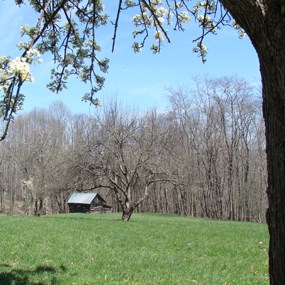
NPS / Dave Bieri Life on the Trump-Lilly FarmOne county away in Greenbrier County, West Virginia, there were many large farms. Their owners grew enough for their own subsistence and to sell as cash crop. Aden Lilly did not have the luxury of creating a cash crop. Everything grown was for the family's subsistence, for food or for trade. The family harvested timber from the forest to create new crop fields. They used the timber to build structures and heat their homes. They planted apple orchards and rows of vegetables in their garden. Aden Lilly kept many animals as livestock. The farm raised Poland China hogs, chickens, sheep, and three to four milk cows. The hogs provided pork which the family salted to preserve it for winter. Sheep were invaluable to the family. Selling lambs in the fall provided income for taxes and school supplies. Wool from the rest of the sheep provided clothes for the family and money to buy supplies for the winter. If they couldn't make something they needed, they would travel to the town of Hinton. In Hinton, they traded any excess harvest for sugar, salt, and farm equipment. Daily life looked very different from life today. Each morning, before breakfast, they would feed the livestock. There was no electricity or refrigeration until the 1940s. Instead of electric heat, a wood burning stove heated the house. Instead of a refrigerator, the family stored store their food in root cellars. The Lilly children entertained themselves with spelling and arithmetic drills. For entertainment, the family owned a Croby battery radio and an organ case piano. The Lilly's also attended regular church devotions. Although they lived off the land, the Lilly family was not isolated. Their farm was one of many farms around the area. These farmers helped each other when needed. They shared facilities like the cane mill where they made molasses. When it came time to harvest, they helped each other with their harvests. For over 50 years, the Lilly family operated their subsistence farm. But by the 1960s, life began to change. When Aden Lilly sold the farm to his son Oba in 1963, Oba did not live at the farm. He planted crops, but did not regularly visit the farm. Oba later sold the farm to David Rosenberger who used the property as a vacation rental. In 1989, Rosenberger sold the farm to the National Park Service. 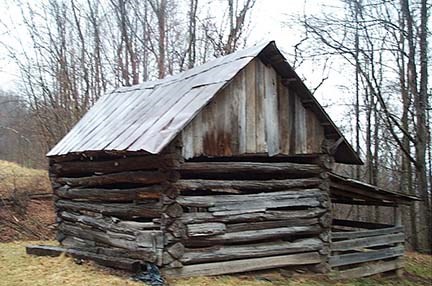
NPS Trump-Lilly Farm TodayThe Trump-Lilly farm is not what it once was. Nature has taken back some of the fields. The house and other structures have weathered over time. The wide open fields of crops no longer remain. The only thing that remains is a glimpse into what the Trump-Lilly Farm was. But that glimpse is an eye opening experience. It peaks into the strife and struggle of the Appalachian subsistence farmers. It reminds us of the farms that once flourished on the early 20th century Sewell Mountain. Visiting the Trump-Lilly Farm:To reach Trump Lilly farm, take WV-26/River Road north from just outside Hinton. Continue north approximately fifty yards from the intersection with State Route 20. Take the first left after crossing Madam's Creek Bridge (marked Freezeland Mountain) onto the gravel road. There is a small parking lot at the farm.The rugged unpaved road to the farm will ascend through second growth forest. There are many sharp turns, steep grades, and panoramic views of Hinton and the New River along the road. There are currently no signs for the farm. Visitors should stop by the Sandstone Visitor Center before visiting the Trump-Lilly Farm. Rangers will provide directions and up-to-date road conditions. Please note that the road to Trump Lilly Farm is unpaved, narrow, and steep.Though normally accessible in most vehicles, during wet conditions or after heavy rainfalls it may be only accessable by high clearance or four wheel drive vehicles. More New River Gorge History
|
Last updated: July 24, 2025

